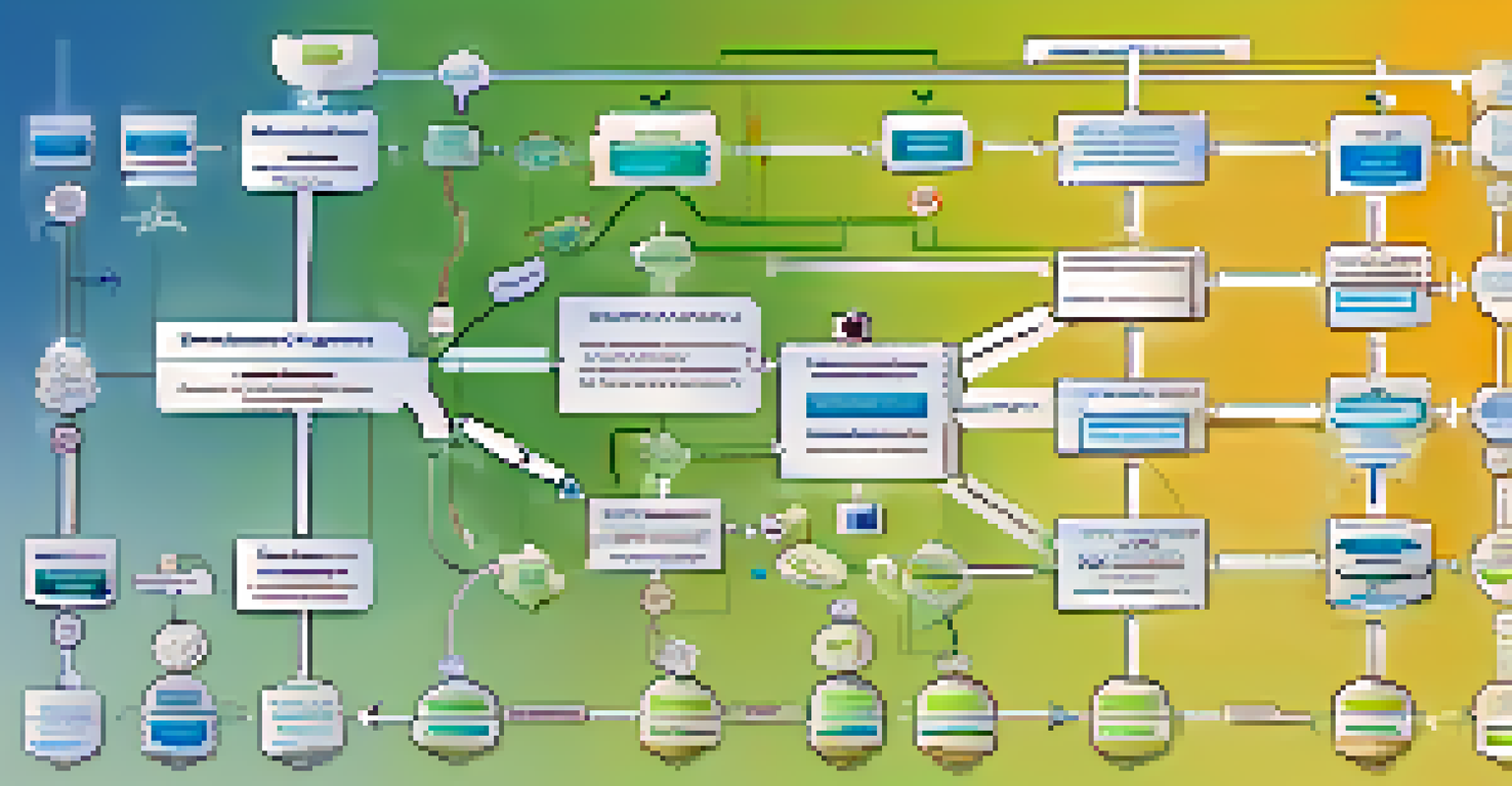Feature-Driven Development: A Model for Agile Success

Understanding Feature-Driven Development Basics
Feature-Driven Development, or FDD, is an agile methodology focused on delivering tangible, working software features. Unlike some other agile frameworks that emphasize team dynamics, FDD prioritizes the feature itself, ensuring that everything revolves around client-centric outcomes. This structured approach makes it easier for teams to manage complex projects effectively.
The best way to predict the future is to create it.
At its core, FDD operates through a series of well-defined steps, from developing an overall model to planning by feature and designing and building features. This clarity helps teams stay on track and keeps stakeholders informed. Think of it as building a house one room at a time, where each room must meet specific requirements before moving to the next.
FDD's framework is particularly beneficial for larger teams, as it allows for parallel working on various features. This parallelism can significantly speed up the delivery process while maintaining a high standard of quality. By breaking down projects into manageable, feature-sized pieces, teams can keep momentum and ensure consistent progress.
Key Principles of Feature-Driven Development
FDD is built on five key principles that foster a focused and effective development process. These principles include developing an overall model, building a feature list, planning by feature, designing by feature, and building by feature. Each principle serves as a guidepost, ensuring that teams remain aligned with their goals and client needs.

One of the standout principles is the emphasis on feature lists, which are essentially a catalog of functionalities that the software must support. This feature-centric approach allows teams to prioritize work based on client value. Imagine ordering at a restaurant; you want to know what’s on the menu to make an informed choice about what you’ll enjoy.
FDD Focuses on Feature Delivery
Feature-Driven Development prioritizes delivering client-centric software features through a structured and clear process.
Additionally, FDD promotes frequent, small releases, which help teams obtain early feedback and make necessary adjustments promptly. This iterative process not only enhances the final product but also builds trust with clients as they see their needs reflected in real-time adjustments. It's like fine-tuning a recipe based on taste tests until it's just right.
Benefits of Adopting Feature-Driven Development
Adopting Feature-Driven Development comes with several compelling benefits that can significantly impact project success. One of the primary advantages is improved visibility into progress, as each feature completed provides a clear indicator of advancement. This visibility can boost team morale and keep everyone focused on their objectives.
Simplicity is the ultimate sophistication.
Another key benefit is risk management. By breaking projects into smaller features, teams can identify potential roadblocks early on, allowing for timely interventions. It’s akin to checking the weather forecast before a road trip; knowing about potential storms can help you prepare and adjust your route accordingly.
Lastly, FDD fosters collaboration among team members and stakeholders by keeping communication channels open. With frequent updates and reviews centered around specific features, everyone remains engaged in the development process. This collaborative spirit not only enhances the final product but also strengthens team relationships, creating a more cohesive work environment.
Challenges and Considerations for FDD Implementation
While Feature-Driven Development offers numerous advantages, it also comes with its own set of challenges. One major hurdle can be the initial setup, which requires a clear understanding of the project's scope and an accurate feature list. Without this clarity, teams may struggle to define their goals effectively, leading to confusion down the line.
Another challenge is the potential for over-engineering features. Teams may become so focused on perfecting functionalities that they lose sight of the bigger picture. It’s similar to spending too much time decorating a room before even building the walls; the foundation must come first for everything else to follow.
Benefits Boost Project Success
Adopting FDD enhances visibility, improves risk management, and fosters collaboration among team members and stakeholders.
Lastly, FDD requires a cultural shift in organizations that may be used to more traditional development methods. Embracing a feature-centric approach can take time, and teams may need support to adapt. This transition is crucial for maximizing the benefits of FDD and ensuring a smooth integration into existing workflows.
Real-World Examples of FDD Success
Numerous companies have successfully implemented Feature-Driven Development, showcasing its versatility and effectiveness. For instance, a prominent financial services firm adopted FDD to streamline their software development process. By focusing on specific features, they were able to reduce development time significantly while improving the quality of their releases.
Another example comes from a leading healthcare provider that used FDD to enhance their patient management system. By breaking down the project into manageable features, they could swiftly implement updates based on user feedback. This adaptability led to a system that better met the needs of both healthcare providers and patients alike.
These success stories highlight how FDD can be tailored to different industries and project sizes. The key takeaway is that by focusing on features, organizations can enhance their development processes and deliver value more efficiently. It’s a reminder that sometimes, a simple yet structured approach can yield remarkable results.
Integrating FDD with Other Agile Methodologies
Feature-Driven Development can be seamlessly integrated with other agile methodologies, enhancing overall project effectiveness. For instance, combining FDD with Scrum can provide a powerful framework that balances structured feature delivery with iterative sprints. This hybrid approach allows teams to benefit from the strengths of both methodologies while minimizing weaknesses.
Moreover, teams can utilize tools and techniques from Kanban to visualize their workflow and track feature progress. This integration helps maintain team focus and efficiency, ensuring that everyone is aware of their responsibilities. Imagine using a dashboard that showcases both your feature list and sprint goals, making it easier to align efforts.
Integration with Other Methodologies
FDD can be effectively combined with other agile methodologies like Scrum and Kanban to enhance project efficiency and adaptability.
Integrating FDD with other methodologies not only enriches the development process but also encourages teams to adopt best practices. This flexibility can lead to a more dynamic work environment where adaptability and responsiveness to change are prioritized. In today’s fast-paced digital landscape, this synergy is critical for sustained success.
Future Trends in Feature-Driven Development
As the tech landscape continues to evolve, so does Feature-Driven Development. One emerging trend is the increasing use of automation tools to streamline the feature development process. By automating repetitive tasks, teams can focus on higher-value features and improve overall productivity, which is vital in fast-moving industries.
Another trend is the growing emphasis on user experience (UX) and user interface (UI) design within FDD. More teams recognize that building features isn’t just about functionality; it’s also about how users interact with those features. This shift towards UX-driven development aligns perfectly with FDD’s focus on delivering value to clients.

Finally, as remote work becomes more prevalent, distributed teams are exploring how FDD can be adapted for virtual collaboration. Tools that facilitate communication and feature tracking are becoming essential for maintaining alignment and productivity. The future of FDD looks promising as it adapts to meet the needs of modern-day development teams.